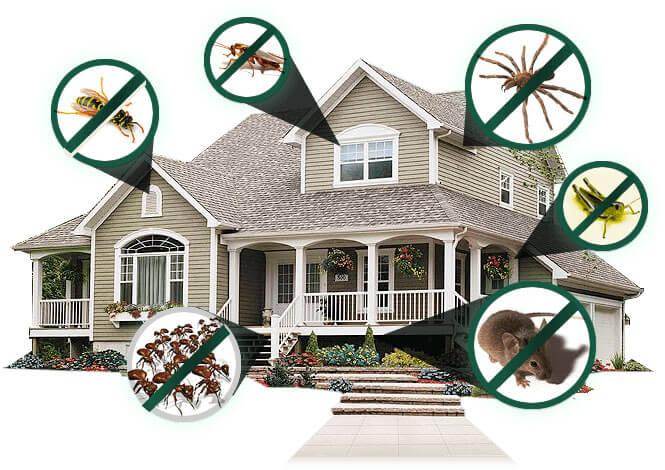A1 Bed Bug Exterminator Charlotte - Specialized Bed Bug Removal
Wiki Article
Bed Insect Therapy Malfunction: Comparing Chemical Vs. Non-Chemical Solutions
In the realm of parasite control, especially when handling the relentless problem of bed bugs, the selection between chemical and non-chemical therapy remedies can be a pivotal one. Both techniques offer distinct advantages and disadvantages, affecting elements such as performance, safety considerations, and total cost. By analyzing the nuanced details of each approach, a more clear understanding of which course to pursue in attending to a bed insect infestation can be attained.Effectiveness of Chemical Therapies
Chemical therapies for bed insect infestations have actually been extensively acknowledged for their rapid and potent effectiveness in getting rid of these parasites. When thinking about the performance of chemical treatments, it is important to understand that they can provide a quick and thorough option to a bed insect problem.Furthermore, chemical therapies have the benefit of providing recurring effects, suggesting that they can continue to remove bed insects even after the preliminary application. This residual activity is specifically advantageous in combating any prospective re-infestations. Furthermore, the quick activity of chemical therapies can bring alleviation to individuals dealing with serious bed pest invasions, permitting them to restore control of their space quickly.
Security Interest In Chemical Solutions
One critical aspect that requires careful consideration when utilizing chemical options for bed pest therapy is ensuring the safety of residents and the atmosphere. While chemical treatments can be efficient in eliminating bed insects, they might posture dangers if not dealt with properly. One of the primary safety and security worries with chemical solutions is the possible injury they can create to human wellness. Direct exposure to specific chemicals utilized in bed bug therapies can bring about respiratory issues, skin irritation, or various other adverse reactions, especially in individuals with pre-existing conditions or level of sensitivities. In addition, inappropriate application or dosage of chemical pesticides can lead to toxic deposits remaining in the treated location, posturing long-lasting wellness dangers to owners.In addition, the ecological impact of chemical options is another substantial factor to consider. Some pesticides used in bed insect therapies may be hazardous to useful bugs, wildlife, and ecological communities if they leach right into the dirt or water systems. It is essential to make use of chemical treatments carefully, complying with security guidelines, and considering less toxic alternatives to reduce these risks and make certain the safe and effective monitoring of bed bug problems.
Advantages of Non-Chemical Approaches
Considering the possible safety worries and ecological impact associated with chemical services for bed bug treatment, checking out non-chemical techniques presents an encouraging choice with numerous unique advantages. Non-chemical therapies are eco visit this site friendly, as they do not add to air or water contamination, making them a sustainable option for parasite control.Furthermore, non-chemical services can be reliable in targeting bed bugs, consisting of hard-to-reach areas where chemical therapies may not pass through. Approaches such as warmth therapy, vacuuming, vapor cleaning, and mattress encasements offer complete elimination without making use of hazardous chemicals. In addition, non-chemical methods can be much less disruptive, needing marginal preparation and permitting quicker reentry into treated locations. Generally, choosing non-chemical bed pest therapy approaches not only prioritizes safety and environmental management yet additionally ensures efficient and thorough pest control.
Limitations of Non-Chemical Treatments

Additionally, non-chemical treatments commonly call for multiple applications to achieve successful elimination. This can be taxing and may not always assure complete removal of all bed pests and their eggs, specifically in surprise or hard-to-reach locations.
Additionally, the success of non-chemical treatments greatly depends on correct execution and thoroughness, which can be challenging for individuals without expert know-how. Poor application of non-chemical methods might lead to incomplete eradication, leading to consistent problems and the need for added therapies.
For that the original source reason, while non-chemical therapies have their benefits, it is important to acknowledge these restrictions and consider them when identifying the most reliable method for handling bed bug infestations.
Expense Contrast: Chemical Vs. Non-Chemical Options
Provided the restrictions connected with non-chemical treatments, a vital element to review in the context of bed bug administration is the expense contrast between chemical and non-chemical choices. Chemical therapies generally entail the application of insecticides by experts, which can range from $250 to $900 per area, depending upon the seriousness of the invasion and the size of the area to be dealt with. On the other hand, non-chemical therapies like warm therapy or steam can be extra pricey, with prices varying from $1,000 to $6,000 for an entire home. While the initial expense of chemical treatments might seem reduced, several treatments might be needed to fully eradicate the problem, possibly boosting the general cost. On the other hand, non-chemical options may give an extra eco-friendly and lasting remedy, although they can be cost-prohibitive for some individuals. Inevitably, when taking into consideration the price of bed pest therapy options, it is essential to weigh the upfront costs against the efficiency and long-lasting sustainability of the selected technique.Final Thought

Thinking about the prospective security worries and ecological effect connected with chemical solutions for bed insect therapy, checking out non-chemical methods presents a promising alternative with numerous unique benefits.Provided the constraints connected with non-chemical treatments, an important aspect to evaluate in the context of bed insect administration is the expense check this comparison between chemical and non-chemical alternatives. In comparison, non-chemical treatments like warmth therapy or heavy steam can be extra expensive, with costs ranging from $1,000 to $6,000 for an entire home. While the preliminary cost of chemical therapies may seem reduced, numerous treatments may be needed to completely remove the problem, possibly increasing the overall cost.In conclusion, when contrasting chemical and non-chemical bed pest therapy alternatives, it is necessary to take into consideration effectiveness, security, advantages, constraints, and expense.
Report this wiki page